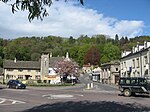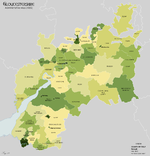Minchinhampton Common

Minchinhampton Common (grid reference SO855010) is a 182.7-hectare (451-acre) biological and geological Site of Special Scientific Interest in Gloucestershire, notified in 1972.The site is owned and managed by the National Trust. The common is one of the largest grassland commons in the Cotswold area. It is south of Rodborough Common SSSI. Both commons are on Jurassic limestone and are a central plateau with steep sides. They drop down to the Nailsworth valley on the west side and the Frome valley on the north side. The site designation includes the outlying areas of Iron Mills and Littleworth Commons. Neu-Lindsey Nature Reserve adjoins the western edge of Minchinhampton Common.Minchinhampton Common is of both geological and biological importance. There are disused quarries near the centre which provide fossil evidence for research purposes. It is unimproved, herb-rich grassland. There are five units of assessmentThe limestone Longstone of Minchinhampton is supposedly the burial site of a Danish leader.
Excerpt from the Wikipedia article Minchinhampton Common (License: CC BY-SA 3.0, Authors, Images).Minchinhampton Common
Bownham Park,
Geographical coordinates (GPS) Address Nearby Places Show on map
Geographical coordinates (GPS)
| Latitude | Longitude |
|---|---|
| N 51.707997 ° | E -2.210522 ° |
Address
Minchinhampton Common
Bownham Park
GL5 5BY , Rodborough
England, United Kingdom
Open on Google Maps










